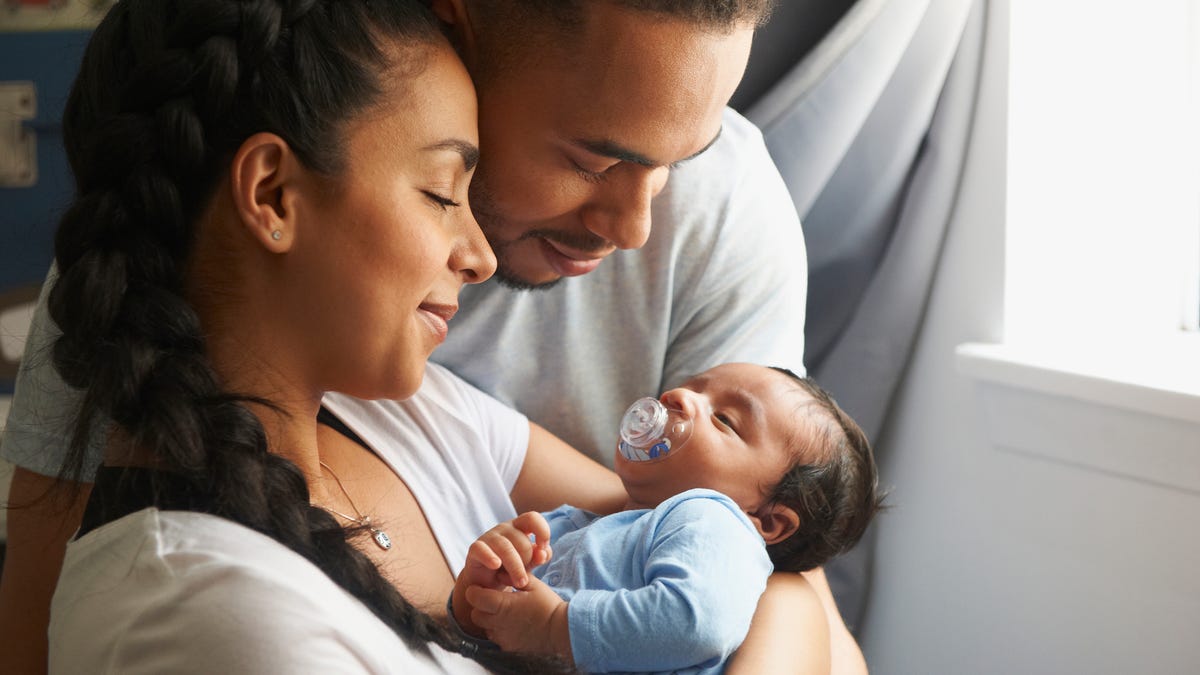
These new investment savings account will be started for every newborn automatically over the next few years.
Amid the divisiveness surrounding the passage of President Donald Trump’s “One Big Beautiful” spending bill, one portion of the legislation seems like it would be agreeable to pretty much everyone: a new type of investment savings account for newborns, which the federal government will seed with money upfront.
That sounds like a win for most folks, but are these accounts all they’re cracked up to be? And how will they actually work?
Most of the conversations and conflicts surrounding the Big Beautiful Bill, which Trump signed into law on July 4, largely ignored these accounts, focusing on the potential damages from sweeping Medicaid cuts and the bolstering of immigration enforcement funding. As polarizing as those elements of the bill were, these new savings accounts, which congressional Republicans attempted to brand as “Trump accounts,” had bipartisan support. In the past, prominent Democrats like Hillary Clinton and Sen. Cory Booker have suggested similar ideas to help parents begin building up savings for their children.
These aren’t going to be free money that new parents can use right away, as there are a number of rules about what can be done with the money. Additionally, the policy will only be in place for a few years unless extended. With all that in mind, keep reading for all the details you’ll need to know about the so-called “Trump accounts” and what they mean for your family.
For more, find out what recent political moves might mean for your student loan payments.
Who’s eligible for these new accounts?
You can open one of these accounts in your child’s name as soon as they’re born, and so long as you, your spouse and the child have valid Social Security numbers. If the child’s parents aren’t married, only the parent opening the account and the child need Social Security numbers.
As the policy currently stands, these accounts can only be opened for children born between Jan. 1, 2025, and Dec. 31, 2028. It’s another example of a common theme highlighted by critics of the Big Beautiful Bill: benefits set to end around the time Trump will leave the White House and drawbacks kicking in once someone new is in office.
Whatever the political machinations behind the timeline might be, just keep them in mind if you have a kid later than the start of 2029, since the policy might not be extended.
What do the “Trump accounts” do?
These accounts allow parents to contribute up to $5,000 a year towards a fund their child will have access to later in life. As investment accounts — think a 401(k) for your new baby as opposed to a standard savings account — they have the potential to accrue a lot more value over the years through capital gains and dividends, but they could also lose value depending on how markets move. Other entities, such as the parents’ employers, can also contribute to these accounts, up to $2,500 a year.
One of the most publicized and desirable aspects of these accounts is that, once one is opened for a new child, the federal government will seed it with $1,000 to get things rolling. This is why the savings accounts have gotten a thumbs-up from some experts, even if parents never add anything else to the account.
“Someone is giving me $1,000 for my kid? That’s a no-brainer. Who turns away free money?” Jaime Eckels of Plante Moran Financial Advisors said in an interview with CNBC. “From there, you’ll have to decide what additional savings you’ll have for your child.”
It’s unlikely, however, that a significant number of Americans will be able to use these accounts to their fullest, since, as the Urban Institute noted, one-third don’t currently have over $2,000 in savings or have surplus income high enough to make stock investments. Still though, you’ll probably be happier to have that $1,000 from the government even if you aren’t able to save much on your own. The Milken Institute estimated that the minimum seed from the government could grow to as much as $8,000 for your child over the course of 20 years.
How can I open one of these accounts?
You should be able to open one at any bank or participating financial institution. If no one gets around to it, the government will open one for the child automatically the first time you file a tax return with the new baby claimed as a dependent.
When can money be withdrawn from one of these accounts?
The holder of the account (that is, your child) can’t withdraw any funds from them until they are at least 18 years old. Funds withdrawn from the account will be subject to the standard capital gains tax, and an additional 10% penalty until they’re 59 and a half or older, similar to withdrawals from a 401(k) account.
However, there are a number of notable life expenses that the money can be used for penalty-free, including higher-education costs and expenses incurred due to things like disability, domestic violence or natural disasters. Up to $10,000 can be withdrawn penalty-free to be put towards the purchase of a home, and $5,000 can be withdrawn to cover the costs of having a baby.
For more, keep an eye on inflation with CNET’s daily tariff impact tracker.